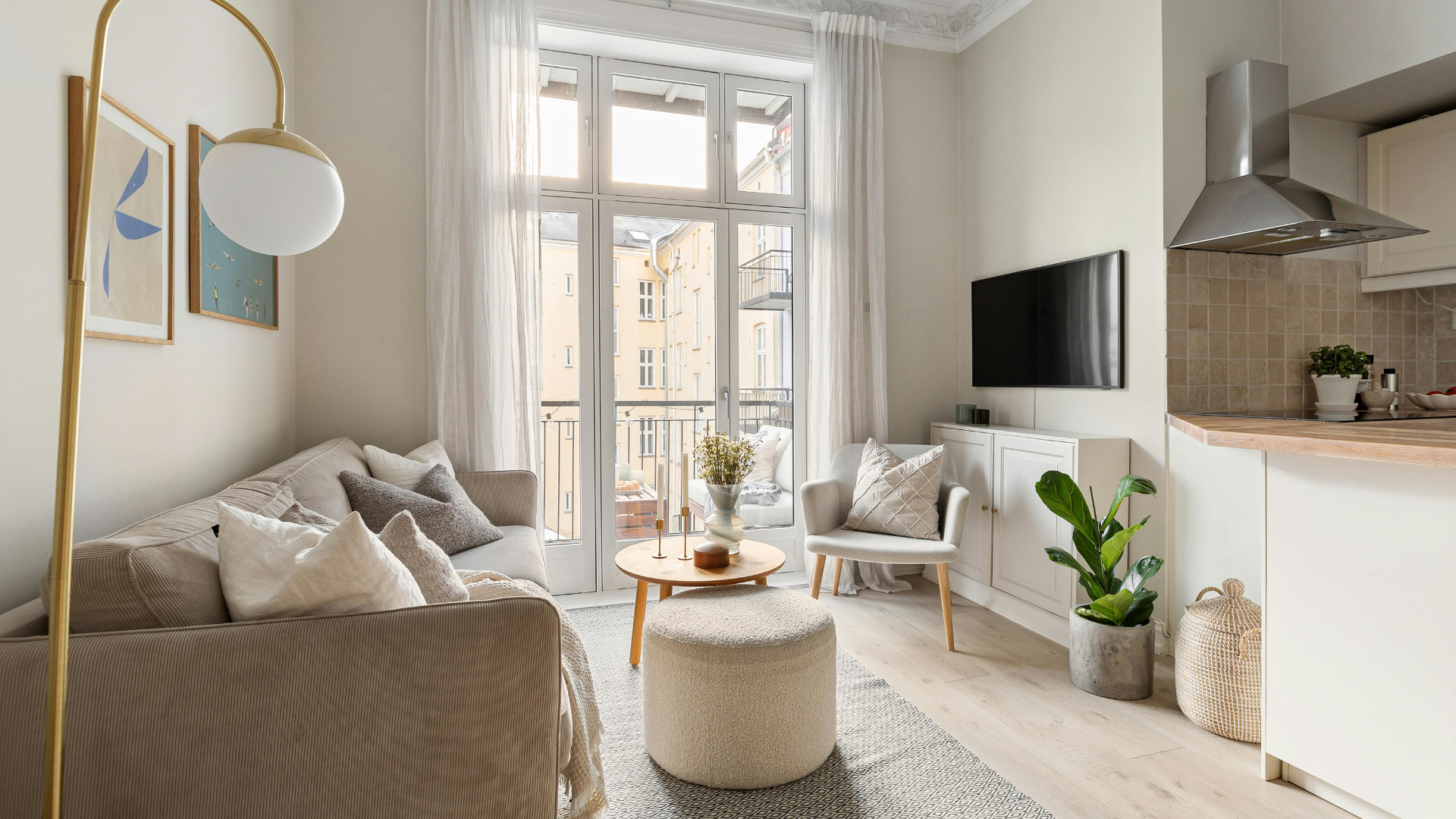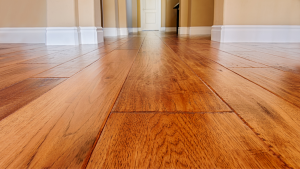Creating the illusion of a larger space can transform how a room feels and functions. To make a small space look bigger, incorporate light colors, utilize mirrors, and choose multi-functional furniture. These strategies enhance natural light and create a more open atmosphere, making the area feel more expansive.
The layout of furniture plays a crucial role as well. Arranging pieces to allow for flow and movement can prevent a cramped sensation. Additionally, keeping clutter to a minimum can visually declutter the space, contributing to an airy ambiance.
Incorporating vertical elements, like tall bookshelves or hanging artwork, draws the eye upward, further enhancing the perception of height and space. With thoughtful choices, anyone can maximize their small area and create a comfortable, open environment.
Choosing the Right Colors for a Spacious Feel
Color selection plays a crucial role in creating the illusion of space. By employing light colors, thoughtful choices in flooring, and strategic use of patterns, a small area can feel inviting and open.
Importance of Light-Coloured Flooring
Light-coloured flooring can instantly enhance a room’s brightness. Options include pale woods, beige tiles, and light laminate. These choices reflect natural light, making the space appear larger.
For maximum effect, consider using consistent flooring throughout the area. This approach eliminates visual barriers, creating a seamless flow. Additionally, selecting a matte finish rather than glossy can provide a more understated look, contributing to an airy ambiance.
Wall and Ceiling Color Selection
Choosing the right colors for walls and ceilings can dramatically impact perceived space. Soft hues like light gray, soft white, or pastels are excellent for enhancing brightness without overwhelming the senses.
A common trick is to paint the ceiling a shade lighter than the walls, which can create added height. Using color on the walls in a diagonal pattern or every other panel can also trick the eyes into perceiving a larger area. This strategy maintains interest while keeping the look open.
Using Patterns and Accents Wisely
While colors can expand a space, patterns must be used strategically. Subtle patterns in textiles, such as curtains or throw pillows, can add depth without overwhelming a tiny room.
Accent walls in lighter, cohesive colors can break monotony while still maintaining an open feel. Large-scale patterns may also help draw the eye upwards, making the ceiling feel higher. It is essential to balance busy elements with more neutral tones to avoid cluttered visuals.
Smart Furniture and Layout Strategies
Effective furniture selection and layout can significantly enhance the perception of space in small rooms. Choosing the right pieces and arranging them strategically allows for functional and visually appealing interiors.
Selecting Appropriately Sized Furniture
In small spaces, choosing the right furniture size is crucial. Oversized pieces can overwhelm a room, making it feel cramped.
- Measure the space before shopping to ensure a proper fit.
- Opt for slim profiles and lightweight furniture that can be easily moved as needed.
- Create defined zones within the space to enhance organization and flow.
- Maintain clear walking paths by positioning f
- Prioritize items with vertical lines that draw the eye upward, creating an illusion of height.
Furniture should not only fit well but also complement the available space. Look for furniture that enhances the room’s flow and opens up pathways.
Multipurpose Pieces for Small Rooms
Multipurpose furniture serves a dual function, ideal for small rooms. Consider the following options:
- Sofa beds provide seating by day and sleeping space by night.
- Storage ottomans can serve as seating or a footrest while hiding away items like blankets or magazines.
- Wall-mounted foldable desks save space while providing functionality when needed.
These pieces maximize utility without sacrificing aesthetics, allowing for a more organized and spacious environment.
Arrangement Techniques for Open Flow
The arrangement of furniture greatly influences a room’s perceived size. Implement these techniques for an open feeling: Furniture away from high-traffic areas.
- Use floating furniture arrangements that don’t push everything against the walls, giving the room a more open appearance.
Incorporating mirrors strategically can also enhance the sense of space. Proper arrangement encourages movement while making the room feel more expansive.
Flooring and Surface Choices to Enhance Space
Selecting the right flooring and surface finishes can significantly create an illusion of a larger area. Light-coloured options and specific textures can greatly influence how space is perceived.
Benefits of Wood Flooring
Wood flooring offers a timeless appeal and can contribute to a spacious feel. Light-coloured wood varieties like maple or ash enhance brightness, making rooms appear larger.
Additionally, wood’s natural grain adds depth without overwhelming the space. It reflects light, which can further create an airy environment. When installing wood flooring, opting for wider planks can enhance the flow of space, reducing visual breaks. This seamless look promotes continuity, allowing the area to feel more expansive.
Maintenance is another factor; wood flooring is durable and can be refinished, thus maintaining its aesthetic for years.
Reflective and Glossy Surface Options
Reflective surfaces play a critical role in enhancing the perception of space. Glossy tiles, for instance, can amplify light, making small rooms feel more open.
Using large, light-coloured glossy tiles or polished concrete floors can contribute to a modern aesthetic while increasing brightness. These surfaces bounce light, which visually enlarges areas.
In addition, mirrors strategically placed on walls or even reflective finishes on cabinets can enhance this effect, creating depth.
Choosing the right finishes can make a small area not only look bigger but also more inviting.
Enhancing Small Spaces with Lighting and Decor
Lighting and decor play crucial roles in creating a more spacious feel within smaller areas. By strategically optimizing both natural and artificial light, along with thoughtful decor choices, a small space can be transformed to appear larger and more inviting.
Optimizing Natural and Artificial Light
Maximizing natural light is essential for enhancing the perception of space. Sheer curtains or blinds that can be easily opened allow sunlight to flood in, providing brightness that makes a room feel airy.
For artificial lighting, it’s important to layer various light sources. Using ceiling fixtures, table lamps, and floor lamps creates depth. Soft white bulbs can also add warmth, making a small area feel cozy yet open. Dimmers provide versatility, allowing adjustments to suit different moods.
Consider placing lights in strategic spots, such as on walls or in corners, to elongate the visuals in the room. Recessed lighting can reduce clutter while providing ample illumination, helping to create that desired spacious ambiance.
Strategic Use of Mirrors
Mirrors are powerful tools in small space design. They reflect light and create the illusion of depth. Placing a large mirror on one wall can visually expand the area, providing a focal point that draws the eye.
Mirrors should be positioned to reflect views, such as windows or artwork. This not only brightens the space but also enhances its decor by doubling the visual appeal. Mirrored furniture can be another option; it offers functionality while maintaining an open feeling.
When selecting mirrors, consider different shapes and sizes for a dynamic layout. A gallery wall of smaller mirrors can also add interest without overwhelming the space.
Minimal Clutter and Decor Choices
Clutter can overwhelm a small area, making it feel cramped. Opting for minimal decor allows for open surfaces and space. Each piece should have purpose or meaning, contributing to the area without causing distraction.
Decor choices benefit from simplicity; neutral colors generally promote a larger feel. Accent pieces in bold colors can add character without overcrowding. Floating shelves provide functional storage while maintaining a clean floor space.
Furniture should be multi-functional. Consider items such as ottomans with storage or fold-out tables that support various activities without consuming too much space. Selecting lighter furniture also aids in creating an airier atmosphere.




